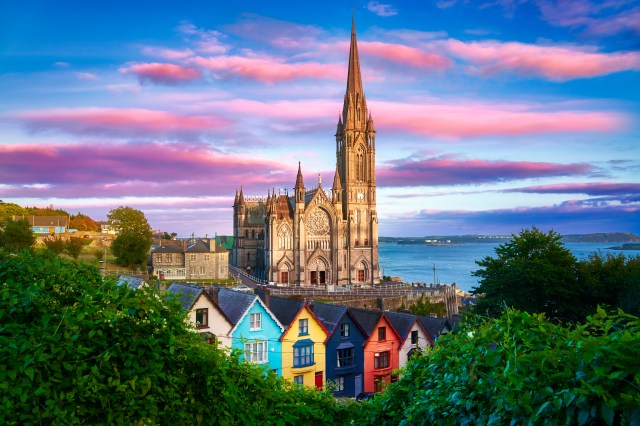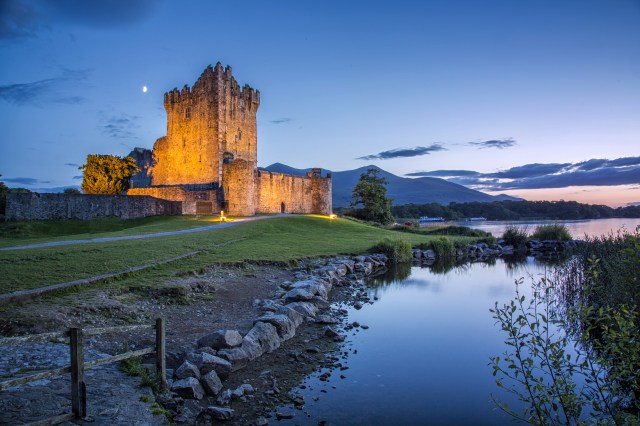The lush countryside of Ireland inspired the nation’s nickname, the Emerald Isle, and the best time to visit Ireland is in the spring, not only for the chance to celebrate St. Patrick’s Day in the “auld sod” but to see the country in all its verdant beauty.
Find great deals on Ireland vacations with AAA Travel.
Prefer an audio summary of this post? Click below to listen to this article.
Spring Is the Best Time to Visit Ireland to Avoid Crowds
“My favorite time of year to visit Ireland is in the spring, when the flowers are starting to bloom and outdoor cafes are opening back up,” says Wendy Marley, AAA travel advisor and Ireland expert. “You’ll run into fewer crowds and mild weather perfect for outdoor activities such as golfing or trying your hand at the national sport, hurling. Prices are less in the shoulder season as well, making it a great time to book a stay in a castle.”
“It was always once springtime in my heart,” wrote Irish poet and playwright Oscar Wilde, and spring is a lovely season to take a tour of Wilde’s birthplace, Dublin, with stops at his house in Merrion Square, the pharmacy (Sweny’s), made famous in “Ulysses,” and Trinity College, where Wilde studied and debated.
If you need to warm up as the evening chill sets in, pop into a local pub for some Gaelic football action among an enthusiastic crowd of supporters; Doyle’s Pub, close to Trinity College, is a popular spot for live music.
The Best Months to Visit Ireland
The months of March, April and May each offer their charms to visitors. March 17, of course, is St. Patrick’s Day, and the patron saint of Ireland is celebrated with a five-day festival in Dublin, a giant parade in Cork and smaller events throughout the country.
April offers the ideal mix of good weather and smaller crowds at Irish tourist destinations. If you love Irish music, make your way to Donegal for the annual Cup of Tae Festival, a celebration of traditional music.
May Day, when the coming of summer is marked by traditions honoring fairy folk and warding off evil spirits, has been celebrated as La Bealtaine in Ireland since the age of the ancient Celts.

More Things to Do in Ireland in Spring
“Spring is perfect for visiting the seaside villages, Kinsale and Galway, or hiking in one of Ireland’s many national parks,” said Marley. Killarney National Park in County Kerry is a 25,000-acre sanctuary of forests, lakes, waterfalls and high peaks. The port city of Kinsale in County Cork is full of history, from a 12th-century church that has been in continual use for more than 800 years to Charles Fort with its commanding views of the harbor.
Visiting the Cliffs of Moher — 9 miles of sea cliffs rising up to 390 feet above the ocean waves — is one of the most popular things to do in Ireland. You’ll probably need to bundle up for a spring trip, but the reward is the opportunity to wander along the cliffs’ edges with far fewer fellow tourists than in summer.
Galway, one of the cultural capitals of Ireland, makes a great base for exploring the cliffs as well as the heaths and peaks of Connemara National Park and historic Kylemore Abbey, where an order of Benedictine nuns welcomes visitors to stroll more than 1,000 acres of grounds, tour the castle-like estate and walled gardens, and enjoy tea and baked goods prepared by the resident nuns.
Galway has a lively food and pub scene — the city’s annual food festival is held in May, and visitors shouldn’t leave town without trying the traditional fish and chips at McDonagh’s or sipping a pint of Galway Hooker beer, named for a local type of fishing boat. The Galway City Museum is a great place to spend a few hours on a cloudy day, but when the sun peeks out, it’s time for a brisk seaside walk along the Salthill Promenade. Or just wander around town to admire the medieval architecture and ramparts of this formerly walled city.

Ireland is a country of castles, which can be found everywhere from the heart of Dublin to the Ring of Kerry. The legendary 111-mile driving tour of the Iveragh Peninsula starts and ends in Killarney and includes a number of castles, both ruined and restored. Ross Castle, built in the 15th century, sits on the shore of Lough Leane and is open for tours. Blarney Castle, home of the kissable Blarney Stone, is in County Cork, while County Claire is home to Bunratty Castle, completely restored with a 19th century Irish village that serves as a living history museum.
Fancy a castle stay? Ashford Castle in County Mayo, close to Galway, is one of dozens castle hotels in Ireland. The 800-year-old structure is set on a 350-acre estate that comes alive in the springtime with activities like falconry, equestrian, golf, cycling, fishing and boating on Lough Corrib. Guests staying in the five-star resort’s 83 rooms, as well as visitors, can sample Galway oysters and traditional Irish cuisine at several castle restaurants, including a dramatically arched dining room dubbed the Dungeon.
Plan your Ireland vacation with the help of a trusted a AAA travel advisor. Travel advisor services are included with your membership (that means no extra charge).
This article has been updated and republished from a previous version.











